AudioCulture
The noisy library of New Zealand music
Te pātaka korihi o ngā puoro o Aotearoa
The Newmatics
aka Newmatics, Sistermatic
Singer Mark Clare strides confidently on in the fanfare’s wake and starts working the capacity crowd like an old hand in a classic soul revue as the group blasts out number after original number, including tracks from the Top 20 charting double single Broadcast O.R.
The date is December 28, 1981 in Whangamata, an upper North Island beach resort, where the young Auckland group are in the early stages of a summer vacation tour that is taking their Clash-inspired African-Caribbean and African-American sound to the nation’s beach towns and provincial cities.
They are one of a new brace of pop groups in the country channelling older sounds with a new energy. The appearance of Paul Hewson on keyboards mid-set nails home the historical contrast. He’s a key member of Dave McArtney’s Pink Flamingos – old-guard rockers on the rebound from Hello Sailor and Dragon – who’ve found new teen favour.
Manager and Furtive Records label boss (along with Simon Grigg) Paul Rose often paired them with mainstream acts and had done since the group’s emergence in late 1980.
Hewson – who has taken to riding in the van with the youngsters and smoking their pot – places a bottle of Jack Daniels on his keyboard. He’s there for ‘Riot Squad’, The Newmatics’ prescient October 1981 hit. It’s an appropriate song for the crackling air of New Zealand’s beach towns in summer. There have been teenage riots in Whangamata and elsewhere over the previous two summers. But tonight, and all through the vacation season, the town will be peaceful.
The Newmatics played to thousands around the New Zealand beaches on that tour – 2,500 in Mount Maunganui, 2,000 in Tauranga, 5,000 at the Bowl of Brooklands in New Plymouth. Huge crowds paid the princely price of $5 a ticket.
Making Do
People have always danced their way through hard times. Adversity fuels the need and toughens the groove. Just ask The Newmatics, a young Auckland band absorbing reggae, dub and soul, who took the trail many progressive punks took to black dance music in the 1980s.
Their sharp moves and sounds helped to provide the soundtrack to a year of political and cultural clashes.
Their sharp moves and sounds helped to provide the soundtrack to a year of political and cultural clashes. The Springbok Tour protests of 1981 made clear the deep division in New Zealand society between traditional New Zealand (the past), and those influenced by the ideas of the liberal internationalist 1960s and 1970s (the future).
And on the surface, it seemed the past was winning. The ruling National Party’s austere import controls had a choke hold on the flow of pop culture; a still largely misunderstood and distrusted influence on teens and post-teens.
Media such as TV, radio, film, the British teen and rock press, and New Zealand’s astute record labels kept those who were interested informed of the new fashions emerging from Britain’s diverse, punk-energised rock and roll and dance scene. The remaining vacuum was filled (as usual) by Kiwi number eight-wire ingenuity and a large splash of op-shop dash.
Beginnings
Mark Clare was a restless Auckland-raised Massey University student when punk rock reached the lower North Island provincial centre of Palmerston North in 1979. “My friends were completely taken over by punk,” says Clare. “They were listening to the new sounds, getting all these singles imported from England, reading the NME religiously every week, and talking about getting a band together.”
He returned to Auckland and contacted Brent (Syd) Pasley, an old schoolmate, who was learning guitar. Pasley returned from up north and together they began writing songs. Another of Clare’s friends, Richard Reed, joined on drums.
“I advertised for a bass player and got Jeff Smith, who’d recently moved up from Wellington,” says Clare. “This tall, quiet, straight-looking typical bass player. We ended up calling him Junior. That combo worked, but the rhythm section wasn’t quite happening so Ben Staples became the new drummer.”
Smith, who was studying to be an accountant, had experience of the punk and post-punk scene in the capital city and was an avid fan of the new music, especially The Clash.
Ben (later known as Benny) Staples was another Auckland teenager tuned in by punk, but too young to experience its first rush. He was a freshly dropped out 16-year-old with only a high school punk group (Da Bomb) under his belt when Clare asked him to join The “Newtonmatics” as the group were then called, after a brief period as The Stencils.
“One of my earliest gigs with The Newmatics was supporting The Terrorways at their [belated] breakup gig in October 1980 at XS Cafe,” he remembers. “The audience were kids our age and the boot boys, who were four or five years older than us. They got into it.”
At first, there was only Simon Clark on sax, but as horns became cool again on the back of Dexys Midnight Runners, a new recruit, Kelly Rogers from Hamilton, presented himself at the Nikau Street practice room.
Auckland
Teen life abounded in the Queen City. The nation’s youth population had bulged between 1976 and 1981. There were the rock cafes and clubs – Island of Real, Squeeze, XS Café, and HQ Rock Cafe in Upper Queen Street. Not cafes as we know them now, basically a venue with filtered coffee, a bit of cake and music. The Windsor Castle, Liberty Stage, Mainstreet, and The Gluepot – the city’s rock pub venues – were there for the over 20s and anyone smart enough to blag their way past the bouncers.
For film outside the mainstream, there was the Lido Cinema on the corner of Manukau Rd and Greenlane Rd, the only cinema where they played anything slightly arty. Diva played there for years. Punk-era LPs and singles could be had at the Record Exchange on Karangahape Road, which was open 9am to 9pm, six days a week, and later, the Record Warehouse in Lorne Street and on Durham Street West, just along from Zwines, and also Sounds at the bottom of Queen Street.
When those avenues were exhausted there was always the house party – drunken destructive orgies – often with a band providing the focus. Pasley and Clare lived with Cliff “Skeets” Gravelle, guitarist in Penknife Glides, in a notorious band pad in Nikau Street in inner-city Newton. Semi-industrial Newton was bare in the evenings, allowing the band, high on acid, to write and rehearse all night.
Clare introduced his new band to his friend Paul Rose, and amping off the same punk-fuelled excitement, he became their manager.
Five Miseries
The Newmatics played often around Auckland’s inner city, fattening their following and saving for a tour van with shows at XS Café and The Rumba Bar, and with Blam Blam Blam in November at the new Reggae Club in Victoria Street West.
Later that month, The Newmatics were placed third in the Mainstreet Battle of the Bands. They saw the year out as support to Citizen Band at their Auckland Town Hall farewell sell-out on December 29, 1980.
In mid-January 1981, they headlined at the Station Hotel, appeared at outdoor rock festival Sweetwaters south of the city to good applause and played at Mainstreet with Pop Mechanix and The Screaming Meemees. They were there again in early February with The Knobz before returning to XS Café for three shows.
In March, two Newmatics tracks appeared. ‘Five Miseries’ was a standout song on Propeller Records’ Class of ’81 compilation; a record heavy with the fruit of the active Auckland scene. Mark Phillips gave the track an unqualified thumbs-up in Rip It Up, writing, “‘Five Miseries’ is ska-injected rock. Thoughtful and tasty, it leaves many of its British counterparts for dead. The wonderful honking sax and delightful phrasing make this the best cut on the album.”
The Newmatics quickly fired a second track into punk record collections and the charts. ‘Judas’ was one side of a Ripper Records double A-side single with The Screaming Meemees’ ‘Can’t Take It’ on the flip. It was recorded by Bryan Staff using the new 24-track studio at Harlequin Studios and rose to No.37 in the pop charts in March 1981.
Mark Phillips again: “‘Judas’: Dynamic sax, tasty guitar, and pumping rhythm section combine for a truly exquisite song.”
‘Judas’ came in a picture sleeve designed by Michael Brookfield, later part of the Fetus Productions collective. With Bryan Staff and Barry Jenkin playing it, the majority of sales came out of Auckland.
By then, The Newmatics already had a reputation as a ska band, echoing the vibrant sound coming out of England. Although it would always be a contested influence within the group, who settled on The Clash’s post-rock years as a primary influence.
“Ska happened to be the underground pop music of the time,” says Benny Staples. "When I first met Syd (Pasley) the big common thing was The Clash – finding ‘Police and Thieves’ on the first album, and seeing [the songwriter credit] L Perry, thinking who is that? Starting the whole journey to Otis and James Brown. Going around the op shops picking up all these old records. The progression seemed logical. That was The Clash influence, who were soulful, but also punk rock.”
Rip It Up editor Murray Cammick, a huge soul fan, was hipping The Newmatics to the canon of innovative African-American sounds as well.
Judas
The Newmatics went on the road in April 1981 with soundman Tom Sampson on their first national tour – The Judas Tour. A confident move for a young group but punk energy was buzzing in the provinces and the accessible Newmatics had little trouble drawing crowds.
“We were part of the New Music Management circuit which was Craig Scott, Mike Corless, and Benny Levin,” remembers Paul Rose. “In New Plymouth, we’d do the Bell Block. Nocturnal Projections opened for us. Their first ever gig. We’d go down there for a Friday and Saturday night and get 600 people paying two to three dollars each, and we did that once every six weeks. We didn’t have to pay for accommodation or booze. We’d get trashed in the house bar afterwards, and come home with eight or nine hundred bucks. Seven of us all in one green Bedford Jumbo van.”
With 24 originals and a version of ‘Land of 1000 Dances’, The Newmatics began a four-day run at the DB Gladstone in Christchurch, starting April 8, 1981.
“The best thing was going to Christchurch and meeting people like The Newtones and The Androidss,” says Benny Staples. “Places like the Gladstone were really going off. And you’d meet people who were personally compatible, not necessarily musically compatible. We were competitive and supportive as well.”
“We played El Clubbo with the Skeptics, a band of 15 year-old school kids playing Killing Joke and Joy Division covers. It was straight away evident that they had something going on. We brought them to Auckland to play with us at the New Station Hotel, and all our fans hated them.”
Wellington, despite having a ska band of its own, The Preservatives, who supported The Newmatics at The Last Resort, proved standoffish.
“Wellington never got it,” says Paul Rose. “They kind of had fun with it, but Wellington at that time was Riot 111, and it was all very political. We were far too simple and not nearly intellectual enough for them. I thought the message was quite intellectual enough. Simple, but not stupid.”
David McLennan, an acidic, but mostly fair appraiser of Auckland acts, spared them the rod in Wellington’s In Touch. “Lately Auckland seems to be spewing out mod bands like they were going out of style (which they are/have). The Newmatics are good because they transcend the “mod” tag. There are elements of that in their music, of course, but they have an intuitive grasp of ska and reggae the likes of which I’ve never heard in a white New Zealand band. Add to this a raw edge drawn from punk, and you have a winning combination that could knock spots off any other band currently working in New Zealand.”
After a brief detour to support Madness in Auckland and Wellington, they were back at stronghold, the Bell Block in New Plymouth, plus Napier’s Wedgwood, Hamilton’s Hillcrest Tavern and Framptons, and at hometown venues, The New Station, Mainstreet and The Rumba Bar.
Screaming Blam-matics Roadshow
With just the barest pause, The Newmatics hit the highway again in July with Blam Blam Blam and The Screaming Meemees, as one-third of one of the great New Zealand rock and roll tours – the University Student Arts Council-sponsored Screaming Blam-matics Roadshow.
Heralded by a full-page ad in Rip It Up, and a hard-to-miss poster campaign, and playing to full houses, the timely trio of acts gave New Zealand students and post-teens a taste of both the power of the new music movement and what shadowed it.
The city’s busy punk scene was out in force to see The Screaming Blamatics Roadshow.
The tour opened at Massey University in Palmerston North, travelling on to Wellington to play the Terminus and Victoria University. Their next show at agricultural college Lincoln University near Christchurch was without Blam Blam Blam, who were banned by the Student Union because of their opposition to the 1981 Springbok Tour, which the groups were inadvertently shadowing down the country.
Benny Staples: “The Student Union said ‘we don’t want the Blams to play, and don’t worry it won’t affect your fee’ because they’d heard the Blams were political. So the Newmatics and The Screaming Meemees played, and it was dreadful. We did the absolute minimum to fulfil the contract, and got the hell out of there.”
Things weren’t a lot saner back in Christchurch. Late in the afternoon of Saturday, July 22, 1981, at post-punk stronghold the DB Gladstone, the room was packed. The city’s busy punk scene was out in force to see The Screaming Blam-matics Roadshow. The perfect bill for the times with the arty Blams pulling in the post-punk intelligentsia, The Screaming Meemees pulling in the mod kids and The Newmatics bringing the dance crowd.
The Newmatics are onstage as the bar is flooded by riot police who form a line, standing six feet apart down one side of the room. They are there because a bomb has exploded in the Christchurch Airport toilets in protest at the touring South African national rugby team, despite having no evidence linking anyone in the room to the incident.
The Newmatics’ singer Mark Clare spies the unwelcome intruders and motions the band to stop, then says a few words to them, cues ‘em all back in again. They chop into a slow mocking ‘Riot Squad’, an anti-police violence skank based on their experiences with the Auckland Task Squad team policing unit. The police retreat before the song is over.
They chop into a slow mocking ‘Riot Squad’, an anti-police violence skank based on their experiences with the Auckland Task Squad team policing unit.
The Screaming Blamatics finished the South Island leg of the tour in Dunedin at the University of Otago and the Shoreline. Mid-August, Auckland got to see what up to 1,000 provincial fans had seen nightly when the Screaming Blam-matics played Mainstreet Cabaret. Two weeks later The Newmatics were back playing The Reverb Room on Symonds Street.
Broadcast our record
The Newmatics’ Broadcast O.R. double 7-inch came in a sombre grey sleeve with a photo of an old-time 2YA DJ in suit, collar and tie cueing a record. The cover was designed by Mark Clare.
“Years before I’d bought a double single of James K. Baxter reading his own poetry from the downtown centre. And I’d always liked the idea of the double single in a double sleeve,” he recalled in 2002. “The inside cover photo I found when I was working at Farmers Trading Company in the advertising department. I quite often had to go down to the Auckland Star to take down the copy and photographs. I saw in the paper a picture of the new recruits for the police force graduating, waving their batons. It summed up for me how wrong they were getting it. If you’re going to have an image of the new police force why does it have to be a violent image?”
In mid-October, the double 7-inch rose to No.13 on the singles chart. It was the highest charting single of the ska revival in New Zealand, including overseas and local acts. The words were powerful and evocative and the sound stunned. It was right on time.
Mark Clare: “‘Doobie Do Boy’ was originally called ‘Tall Tony’. It was about a friend of ours who was in a band called The Secret Agents, a punk band. He was a brilliant guy. He had some kind of condition where he grew extra tall. He always used to hang out with us. It was about following one guy, who was a generic sort of guy in the scene, going to gigs. That whole rock and roll world – putting him in situations and writing the lyrics around that.”
‘Doobie Do Boy’ had the energy and pop smarts, but ‘Riot Squad’ got the most attention.
“Television New Zealand decided to film ‘Riot Squad’,” says Clare. “The video is very comic. Light. Which wasn’t our idea. They storyboarded these things, and you just went and did it. I think it was training for new directors. They’d got Captain Hotshot (Michael Wilson), this tall skinny actor from Wellington, who’d been around for years. We couldn’t believe these guys were in our video.”
When the first full-colour cover edition of Rip It Up came out in October, The Newmatics were on the cover in eye-blinking bright yellow, red, green, purple and blue jumpers, photographed as a collapsing human pyramid. It wasn’t a great shot, but it was fun, and a welcome colourful burst of light in the otherwise grey days of late 1981.
Mark Clare: “You had bands like The Swingers, and they all seemed to have choreography. Their clothing was very much art directed. That was an attempt by us to do something similar. To add some colour. The jumpers were the worst thing to wear on stage (too hot). So they didn’t last long.”
The Newmatics were playing constantly around the Queen City. In September they performed at Auckland University cafe with Blam Blam Blam and The Screaming Meemees; at Mainstreet with Auckland ska group The Blue Asthmatics, and at the Rumba Bar. In October, they returned to the Station Hotel, the Lion in Palmerston North, and watched the first showing of ‘Riot Squad’ on Radio With Pictures.
They were back at Mainstreet mid-October, supported by 1960s style pop strummers Prime Movers. That night, soundman Simon Mark-Brown recorded The Newmatics’ large live set.
Benny Staples: “On quarter-inch tape, which was really rough, but really good. The tracks include ‘Its Colder’, ‘Health’ (a Syd rap, having heard Grandmaster Flash), ‘Soul Man’, an instrumental called ‘Dummy’, which we used to start the show with, and ‘Five Minutes To Zero’.”
Simon Clark departed amicably in November and was replaced by rookie trombonist Chris Watts. Staples: “We wanted more sound. We were totally blown away by Big Jimmy Paterson (of Dexys Midnight Runners) and the power of the sound. It’s an amazingly physical instrument. We found Chris, who had a trombone and was learning, and forced him into the band.”
From there it was back to the Rumba Bar for three days, followed by a show at Mainstreet. December gave no ground. Paul Rose: “We did Raw Rock ‘81 on December 12, 1981, at Hastings Racecourse, where a family lost their family farm. A Fokker Friendship full of musicians flew down. We were picked up by limousines. It was just over the top. We were flown back the next day.”
The show was marred by boot boy violence. “Two songs in two groups of boot boys in front of the audience were fighting, and the whole crowd just started,” remembers Clare. “That day really said it all for us,” says Staples. “It was really scary, and we suddenly wondered, is it us?”
As the rest of New Zealand kicked back to celebrate Christmas and the holiday season, The Newmatics prepared for their largest crowds yet as a support act for old guard rockers, Dave McArtney and The Pink Flamingos on a North Island beach tour.
Playing The Champion
Early in 1982, ‘Playing The Champion’ appeared belatedly on Goats Milk Soap, a Ripper Records compilation. A video of the track featuring the Newmatics in a pool hall was shown on teen pop show Droppa Kulcha.
Later that month, The Newmatics played their second and final Sweetwaters Festival. The group relished the chance to play big stages and crowds.
“We needed to do it. We wanted to do it,” says Mark Clare. “I had been to those festivals before such as Nambassa. I never dreamt I’d get the opportunity to be on stage. My big thing was, ‘Who are we going to play before? Are we on the main stage or not?’ It was us then The Angels and Roxy Music."
Topping off a successful month, The Newmatics were well represented in the 1981 Rip It Up Readers Poll, with Ben Staples voted second best New Zealand drummer. Mark Clare was fourth best New Zealand vocalist. The Broadcast O.R. EP rated as the third best New Zealand 45. The Screaming Blam-matics was the fifth equal best concert and The Newmatics were voted fifth best NZ group.
The Newmatics were back in Harlequin Studios in February to record ‘Square One’ for their third single with a projected dub version of ‘Start Again’ as the flip. Then it was back on the road to Waihi Beach before returning to Auckland to play the Rumba Bar and the Gluepot.
In early March, The Newmatics began their fourth major tour in 12 months – The Tearoom Tour. The student orientation tour took in Christchurch, Lower Hutt, Palmerston North and Wellington with the final show at the unusual (for them) venue of the Govett-Brewster Art Gallery in New Plymouth.
Paul Rose: “They played on the stairs. The people who came I’m sure talked about it for months and months. There were a couple of Len Lye moving sculptures in there at the time. Kinetic sculptures.”
After 14 months thick with shows and event, the group was tired, particularly Mark Clare. “I was always dragging my heels. I was always thought we should wait. That we should sort the songs out. Nothing was ever quite polished or arranged properly for me, but the other guys were going ‘come on in and do it’. Everything seemed to be a rush all the time. Venues were starting to close near the end. The whole thing was imploding on itself. We were getting stale. And our writing was affected by it.”
Benny Staples: “Paul wanted to leave. That was okay, but when Jeff said he wanted to leave, the whole floor dropped out of it. We were completely stunned. Mark said he wanted to go to Britain and within 20 minutes everything had fallen apart. Our – mine, Syd and Kelly’s – reaction was let’s go and form another band. The Miltown Stowaways.”
The Newmatics, Auckland’s new dance pioneers, bowed out to a packed Mainstreet on April 27, 1982.
The Newmatics, Auckland’s new dance pioneers, bowed out to a packed Mainstreet on April 27, 1982, working those fine tunes one last time with bits and pieces of the busy Auckland scene onstage around them. A belated release of The Newmatics’ muscular soul blast ‘Square One’ backed with a live ‘Land of 1000 Dances’ peaked at No.42 on the singles chart in June 1982.
Going To The UK
While typical of a time when groups lasted two to three years at most when the pull of travel was ever stronger, The Newmatics break-up still seemed premature. They hadn’t recorded an album, although artwork was designed by Paul Luker.
Their available recorded legacy was also thin. This was remedied in 2002 when drummer Benny Staples compiled their released songs on Riot Squad, along with early, unreleased recordings such as ‘Walkie Talkies’ and raw but representative period live recordings.
The Newmatics then reformed in May 2003 for the True Colours tour with Blam Blam Blam and The Chills. A version of the group still performs today and opened for The Specials in 2012.
And as for the sounds they produced – a good case could be made that The Newmatics are the godfathers of contemporary, non-electronic urban dance music in New Zealand.
In 2015 The Newmatics released their debut album, Holy Stone, some 30 years in the making.
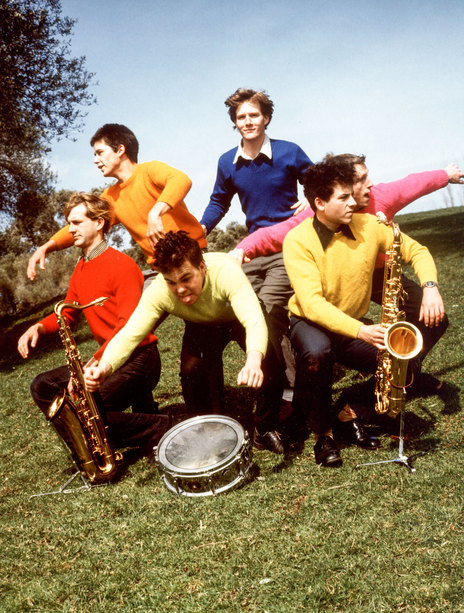
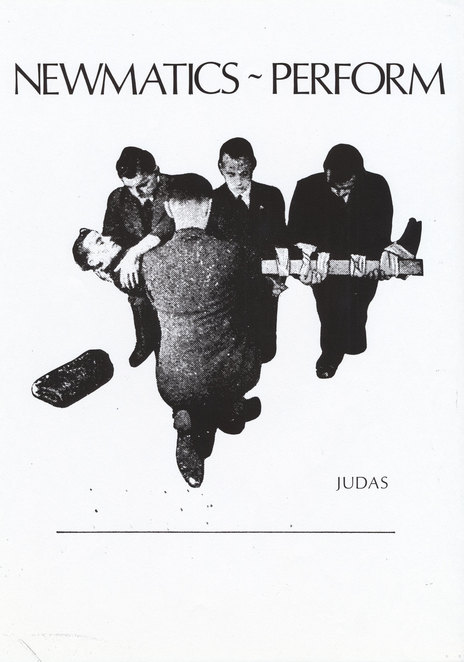
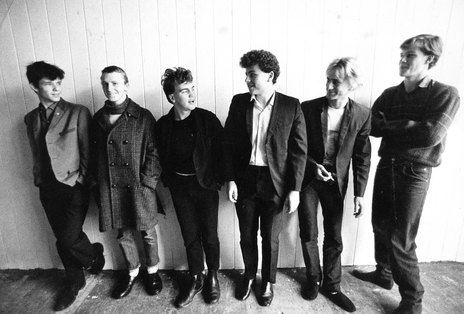
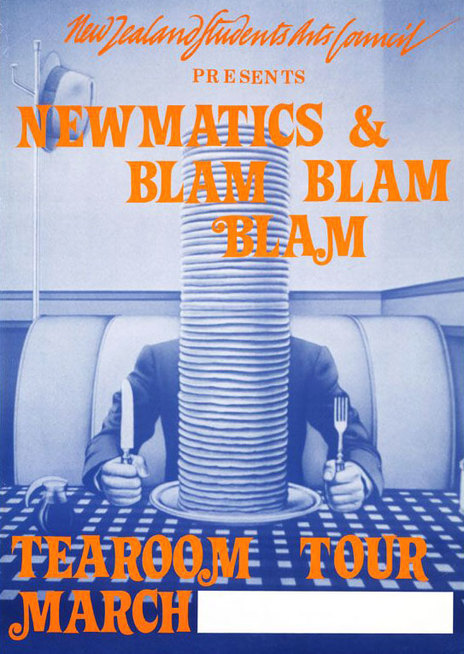
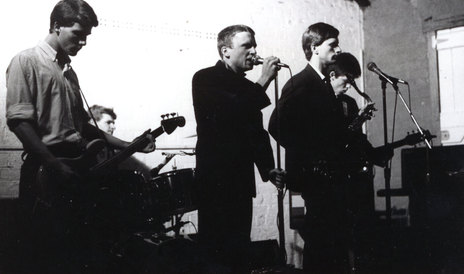
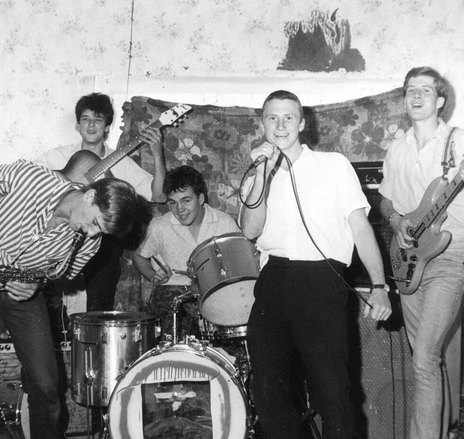
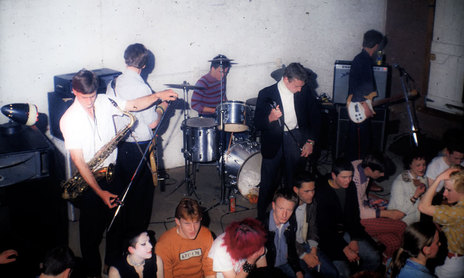
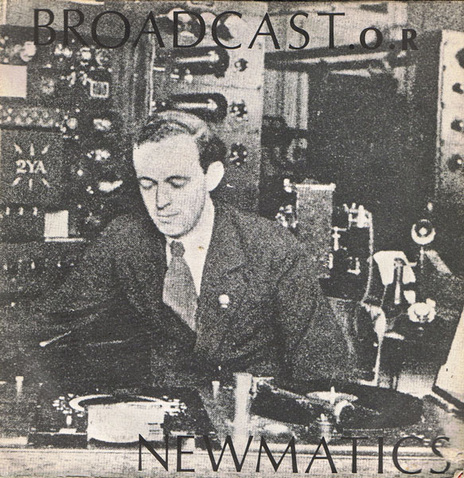
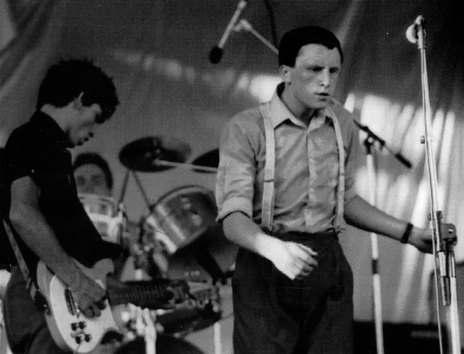
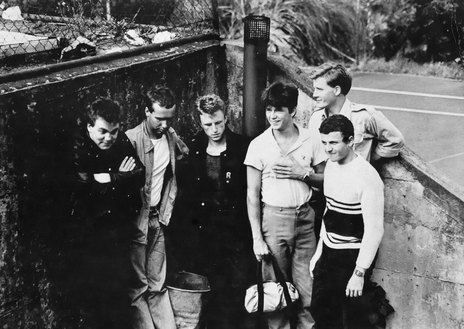
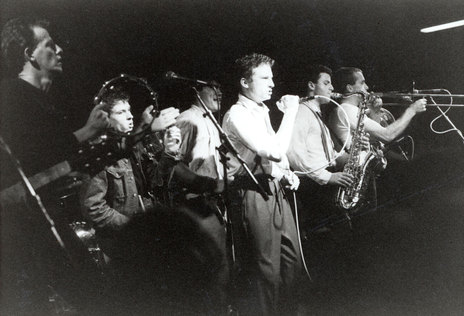
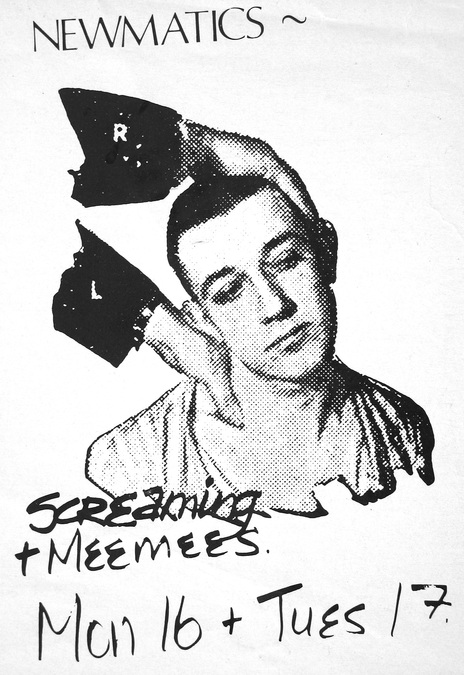
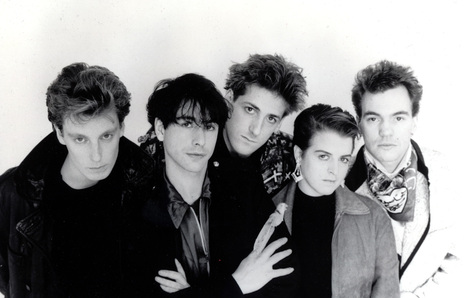
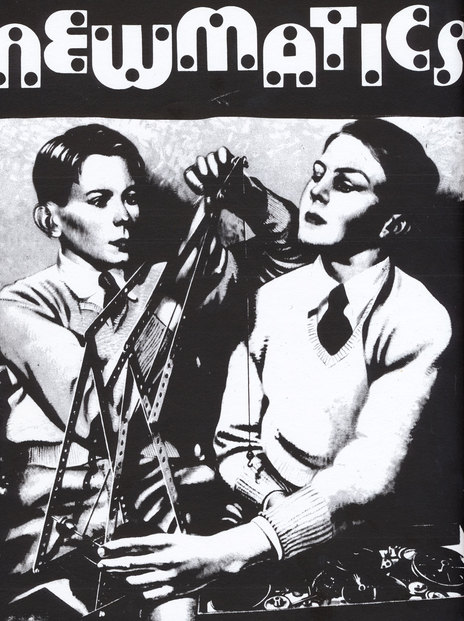
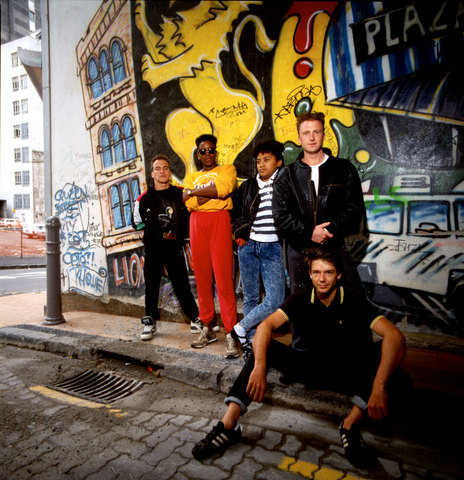
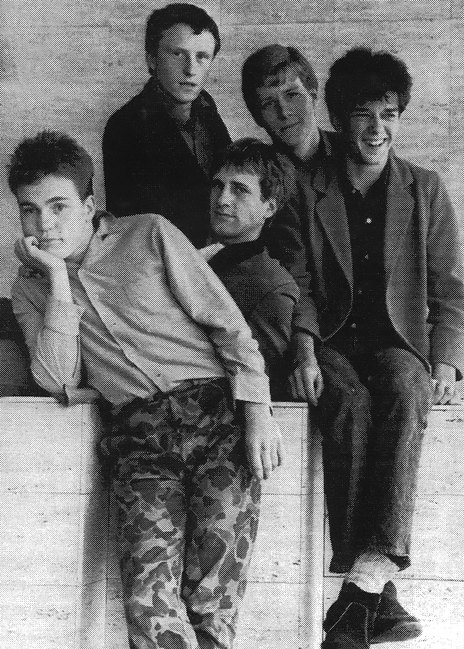
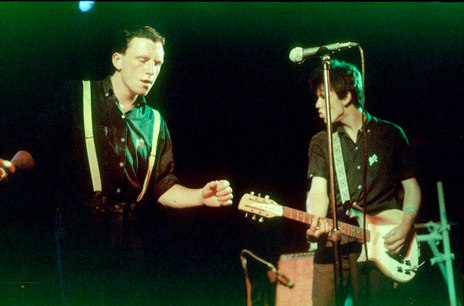
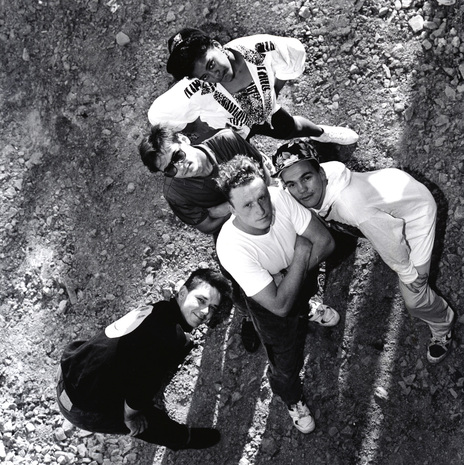
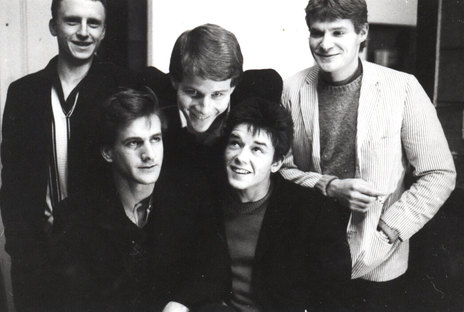
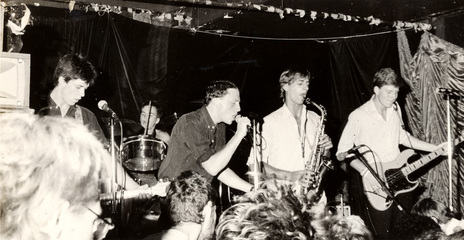
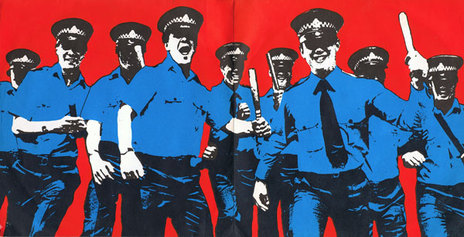
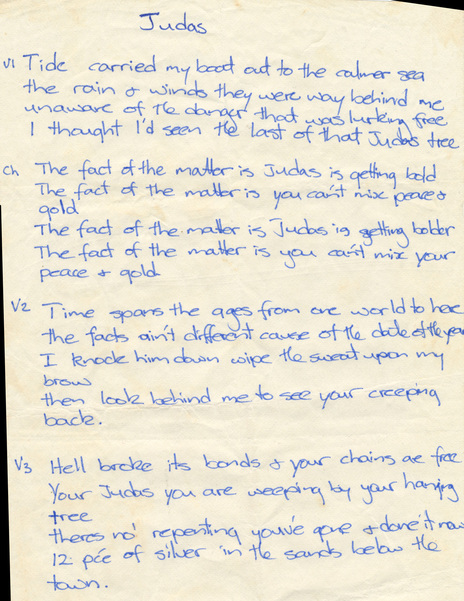
Mark Clare - vocals
Jeff Smith - bass
Brent ‘Syd’ Pasley - guitar
Dick Reed (aka Rick Reed) - drums
Simon Clark - saxophone
Kelly Rogers - saxophone
Chris Watts - brass
Mark Clare is an Auckland based actor and director.
Jeff Smith is a documentary maker and cameraman, who co-directed the 2011 Chants R&B documentary Rumble and Bang.
Ben Staples drummed for The Woodentops in the U.K, Lava Lava and his T Son project.
Kelly Rogers was involved in setting up and managing Rialto Cinemas.
Sistermatic’s single was withdrawn after one morning’s sales due to a threat of legal action – it named a financier then on the run from the authorities for fraud.
Visit our sister site
NZ On ScreenMade with funding from
NZ On Air